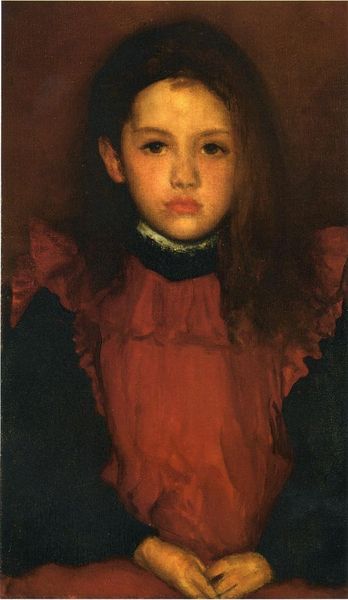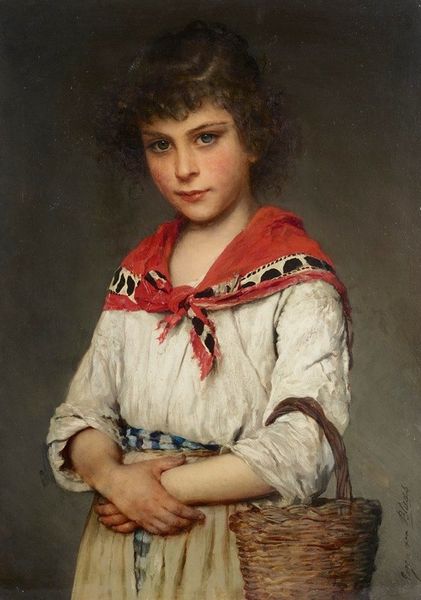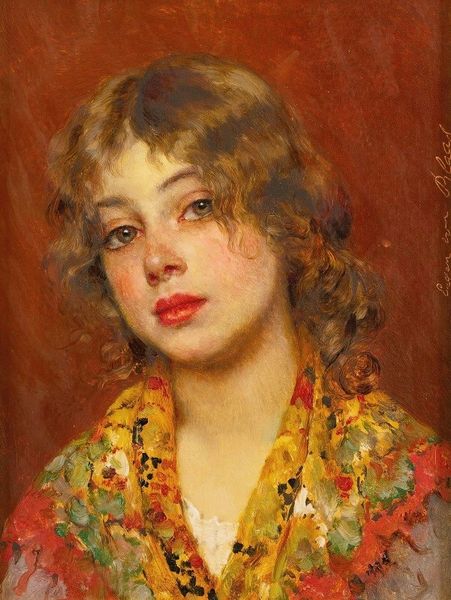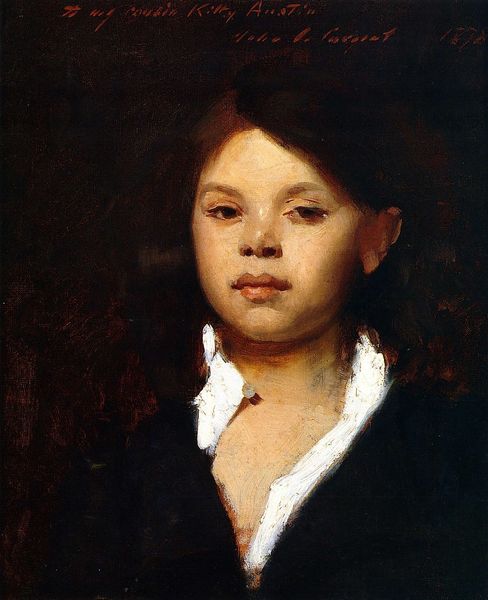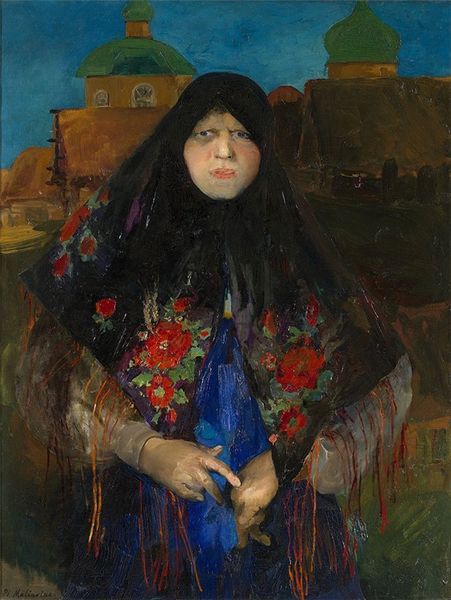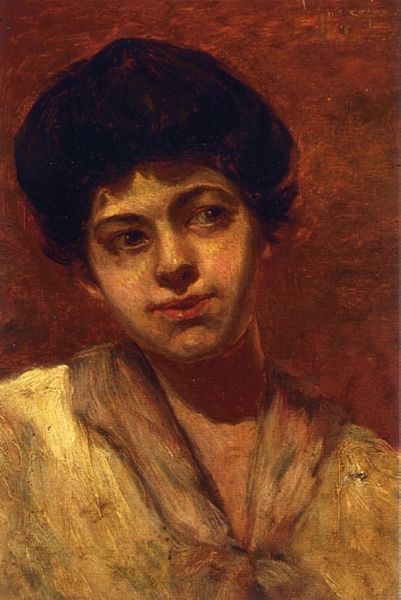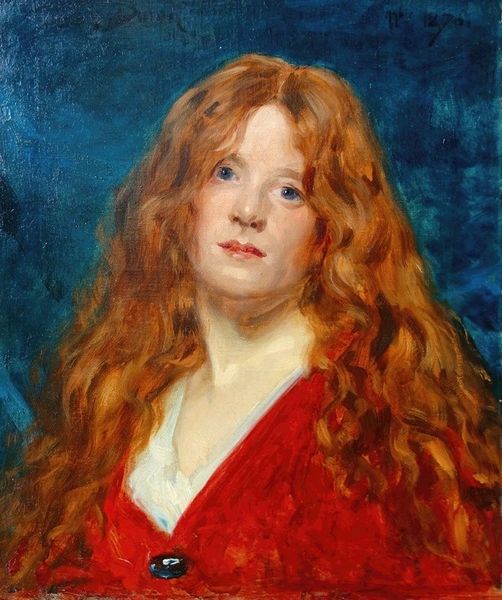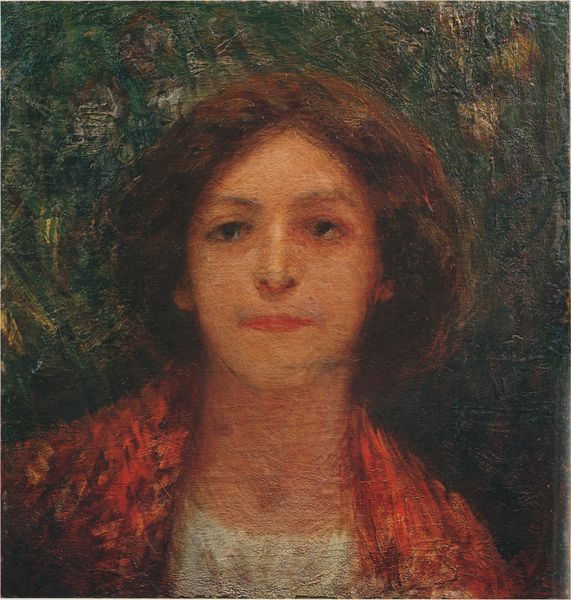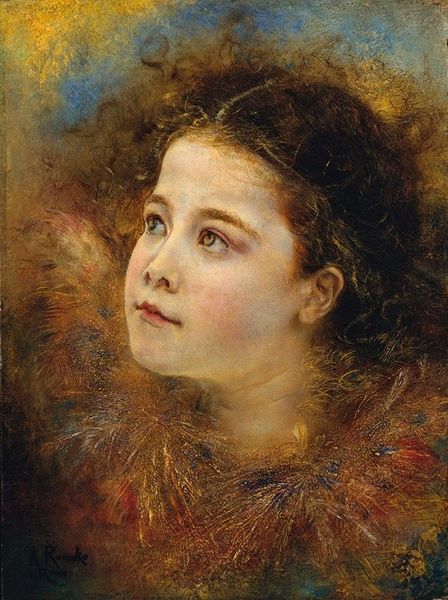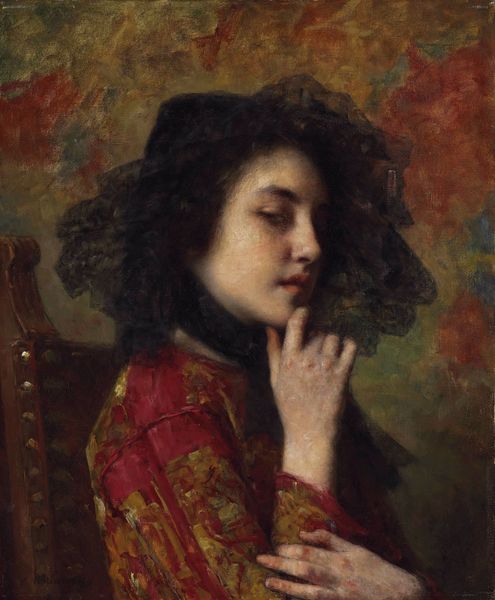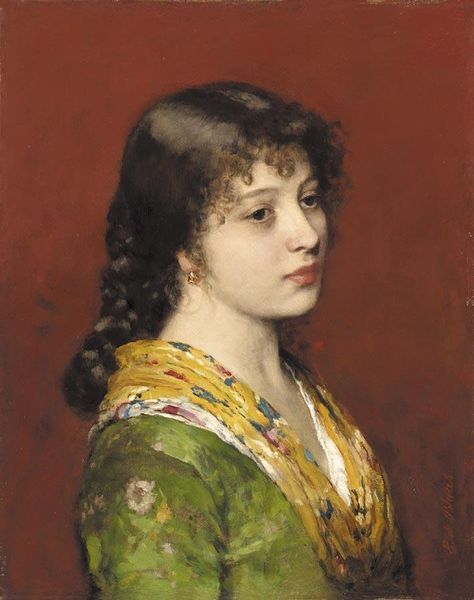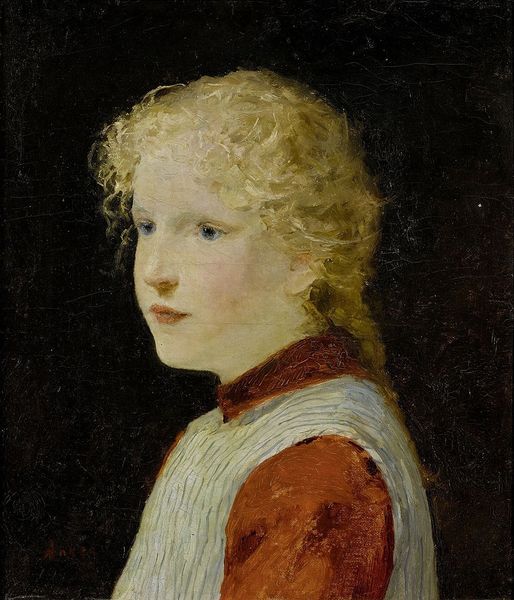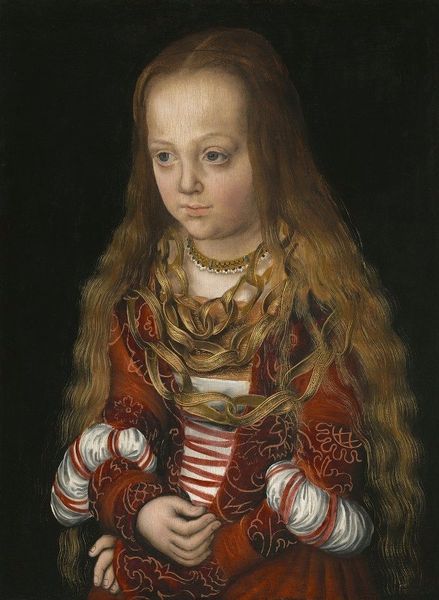
#
portrait
#
portrait reference
#
portrait head and shoulder
#
animal drawing portrait
#
portrait drawing
#
facial portrait
#
portrait art
#
fine art portrait
#
celebrity portrait
#
digital portrait
Copyright: Public domain
Curator: I am immediately struck by the somewhat melancholic and withdrawn expression on the girl's face. The way her gaze drifts off to the side makes her seem lost in thought. Editor: Indeed, it's a captivating portrait. Ford Madox Brown painted "The Irish Girl" around 1860. Note the use of pigment; he doesn't hide the marks of its application on the canvas. See how the layered brushstrokes construct form and convey a tangible sense of materiality in her hair and the fabric? Curator: Her wild, untamed hair certainly catches the eye. Dark and voluminous, it frames her face almost like a halo, adding to her almost otherworldly presence. In contrast, she is clutching a very small, fragile flower. Editor: The layering of the pigments tells part of the story, don’t you think? Brown was fascinated with depicting light and texture, experimenting with pre-Raphaelite techniques such as using wet, white grounds. That color and brilliance, then tempered down; the pre-Raphaelite interest meets a darker industrial mood. Curator: Absolutely, it underscores a tension – a delicate beauty existing amidst, as you say, a darker mood. Perhaps a broader societal or historical reference? Editor: One cannot ignore the social context. Painted during the mid-19th century, it reflects the complex relationship between England and Ireland, especially during the Great Famine. Textiles carry stories—notice the patterned shawl, a signifier of trade, production, and, maybe, the movement of people? It serves to highlight the complex intersection of identity, labour, and perhaps even displacement. Curator: So, her gaze becomes a kind of window into a personal story, perhaps symbolic of the challenges and struggles faced by the Irish during that time? Editor: It gives one pause. By meticulously showing the materiality of both the figure and shawl, it directs our focus toward not only aesthetic qualities but toward a tangible encounter with the circumstances of production and existence. What seems a straightforward image in the symbolic language you are drawn to, belies social meaning. Curator: Thank you. Looking again at "The Irish Girl", it’s clear Brown provides a window to a powerful meditation on beauty, identity, and cultural memory, using visual symbols in a thought-provoking way. Editor: And for me, the artist's deliberate materiality prompts a deeper consideration of the human elements—and real economic implications of production in a world that can seem overly polished or removed from questions of labour.
Comments
No comments
Be the first to comment and join the conversation on the ultimate creative platform.
